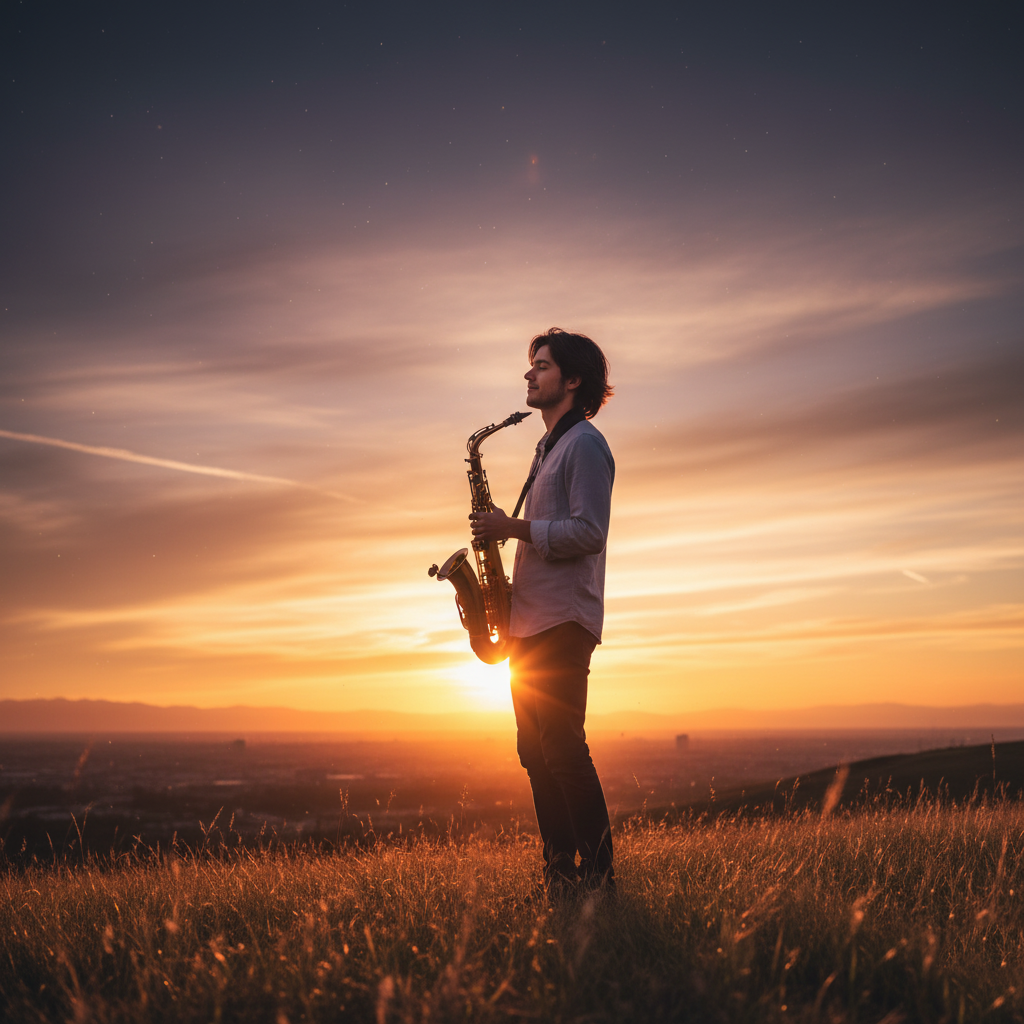Photographing musical instruments possesses a unique magic: it unites visual aesthetics with the emotional power of sound art. An instrument is not merely an object; it is an extension of the musician, a symbol of identity, passion, and discipline. Therefore, photographs of instruments convey much more than just an image: they tell a story about the connection between the artist and their music. From the elegance of a violin to the energy of a guitar or the delicacy of a piano, each instrument offers endless possibilities for expressing emotions through body language and light.
Posing with a musical instrument requires sensitivity. It’s not simply about holding it, but about interacting with it naturally, reflecting respect, familiarity, and emotion. A well-executed photograph can capture the essence of the musician in perfect harmony with their creative tool, whether in a professional setting or an intimate environment. Furthermore, the right poses can highlight both the instrument’s design and the performer’s personality.
In this article, we will explore five posing ideas that enhance the beauty of this relationship. Each one seeks to balance technique and feeling, showing how the body, hands, and gaze can become part of an artistic composition. Whether it’s a professional photoshoot, an album cover, or a personal image for social media, these ideas invite you to connect with the authenticity and expressive power that comes from music.
1. Siting down playing the instrument
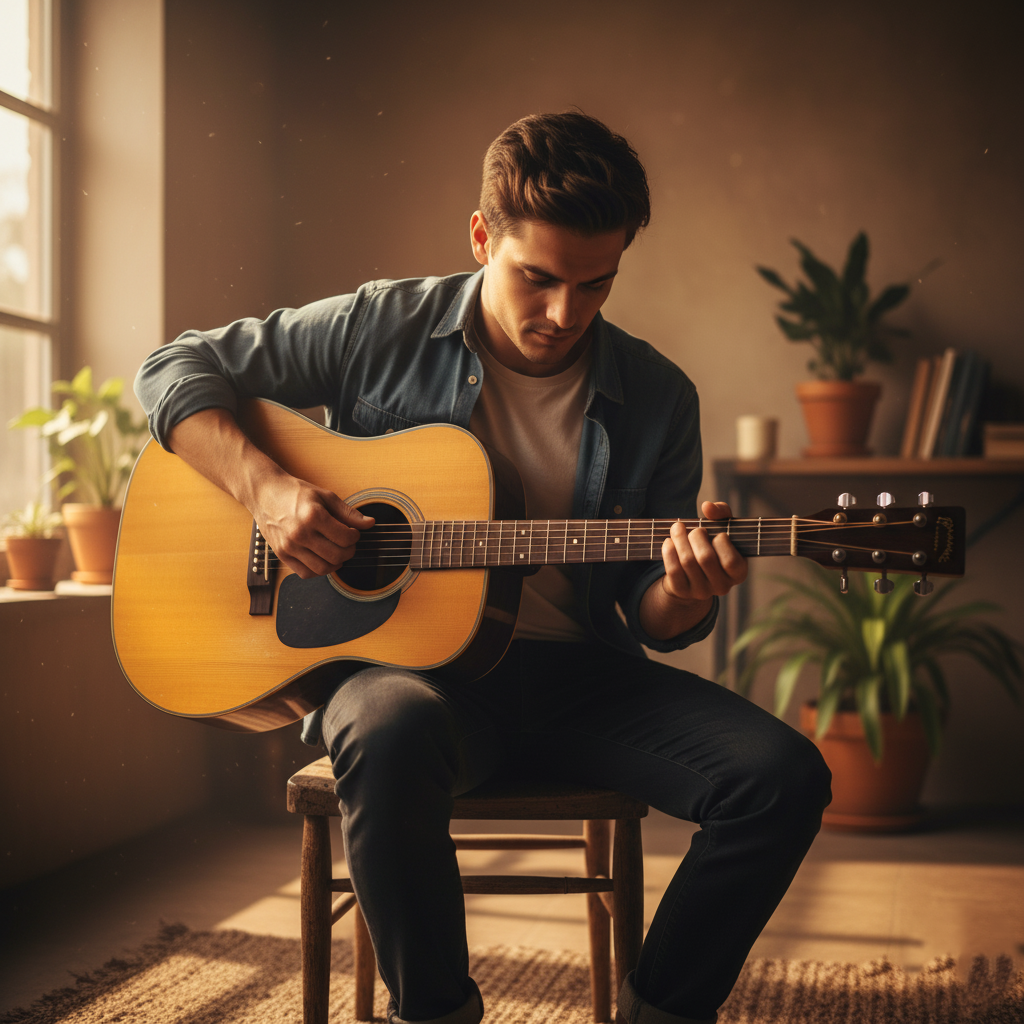
Posing while seated and playing an instrument is one of the most authentic and powerful ways to capture the relationship between a musician and their art. This pose conveys concentration, dedication, and genuine emotion, as the body adopts a natural and organic posture. There is no artifice, only the moment when the music seems to flow beyond the sound, transforming into an image that vibrates on its own.
The secret to this pose lies in the naturalness of the gesture. The musician should position themselves comfortably, avoiding any tension that might disrupt the flow. The hands, a key element in this composition, should reflect movement or delicacy, depending on the instrument. For example, a guitarist with their fingers on the strings conveys precision and passion, while a pianist with their gaze lowered and fingers suspended over the keys creates a sense of sonic stillness. The facial expression should be focused yet gentle, letting the eyes speak louder than a smile.
The surroundings and lighting help reinforce the atmosphere. Side lighting or warm lighting adds intimacy, while a neutral background or one with wood textures creates a welcoming context. Outdoors, the natural light of the setting sun can enhance the tones of the instrument and the skin, adding a touch of nostalgia. The important thing is that the pose doesn’t look staged, but rather a genuine moment in which the musician is completely immersed in their sound.
This image captures the essence of art: the moment when the performer and their instrument merge into a single gesture.
2. Standing holding the instrument with pride
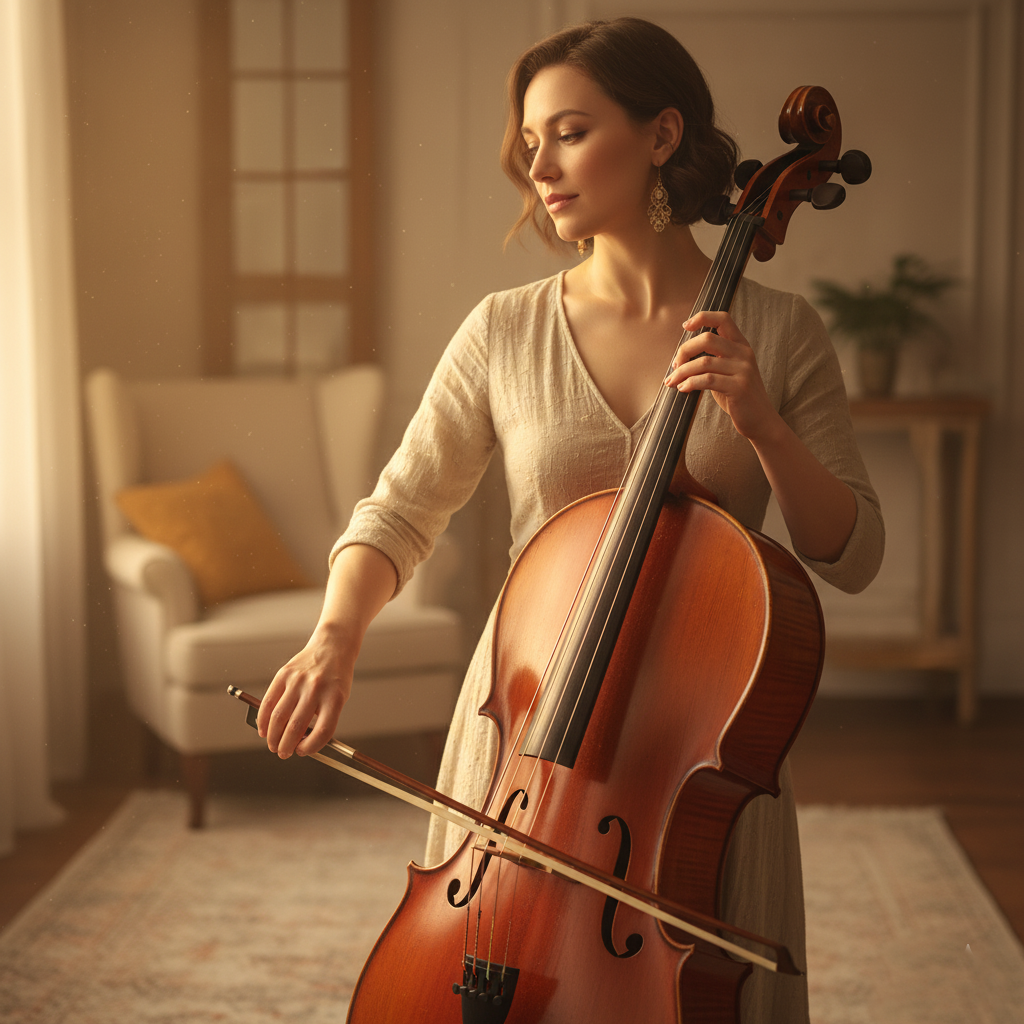
Posing while standing and holding an instrument is one of the most powerful ways to reflect identity and artistic character. This pose communicates confidence, passion, and respect for music. It’s not just about showing the instrument as an object, but about presenting it as an extension of the body and soul. Every musician has a unique way of holding it, and that uniqueness is precisely what gives the image its strength and authenticity.
The posture should be firm yet relaxed. A straight back and open shoulders project confidence, while a slight lean toward the instrument can express affection or an emotional connection. The subject can look directly at the camera with determination or gaze off-screen, creating an air of introspection. The way the instrument is held depends on its nature: a guitar can rest against the chest, a violin gently on the shoulder, or a saxophone elegantly draped around the neck.
Lighting is key to accentuating the instrument’s details: its curves, metals, strings, or textures. Side lighting or a soft spotlight from above helps highlight the lines without creating harsh shadows. As for the setting, you can choose a simple background to highlight the figure or a musical setting—like a studio or an empty stage—to provide more visual context.
This pose works because it transforms the musician into a symbol: someone defined by their art, who carries the power of music even in silence.
3. In motion, catching the energy of the moment
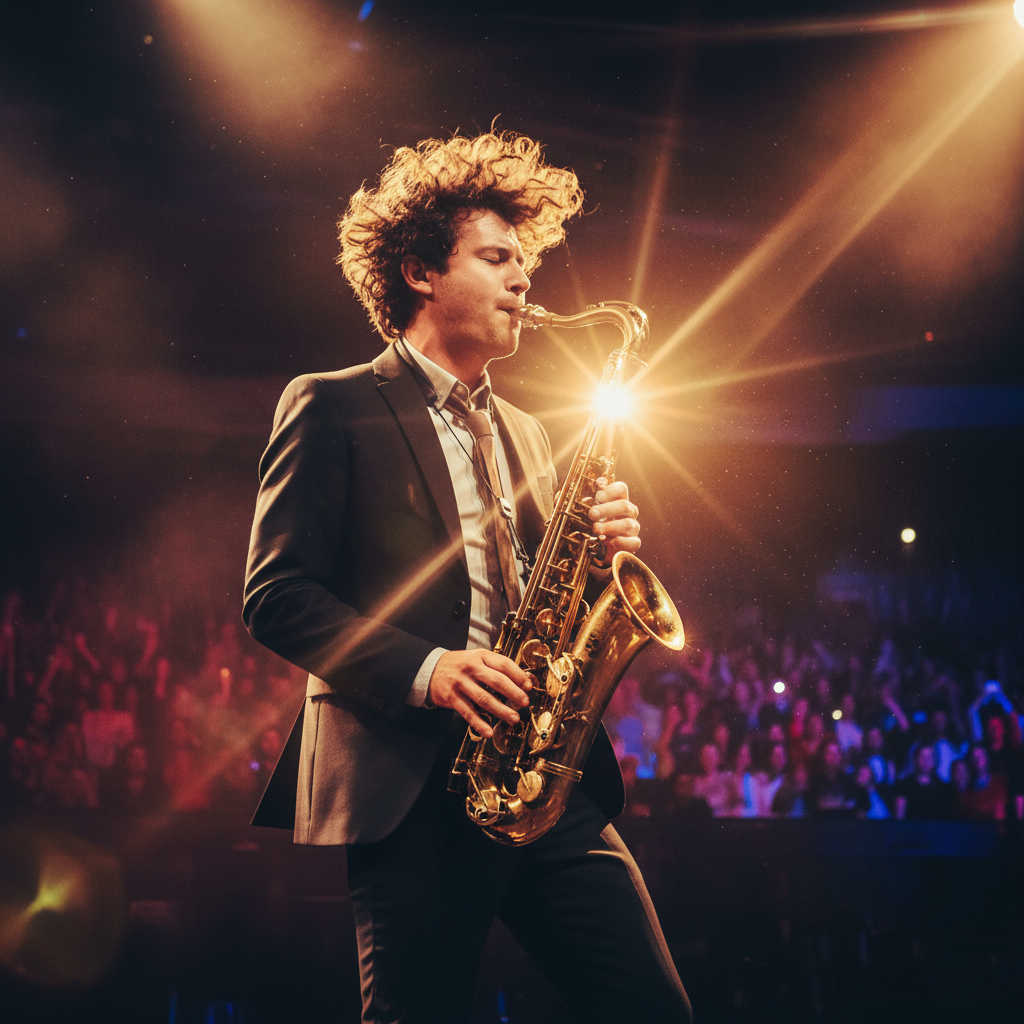
Photographing a musician in motion while playing their instrument is one of the most dynamic and expressive ways to portray a passion for music. This pose breaks with the rigidity of stillness, giving way to fluidity, intensity, and visual rhythm. Every movement of the body, every gesture or vibration becomes a living line that conveys pure emotion. The idea is not to freeze the action perfectly, but to capture the essence of movement: the instant when art and body merge.
This pose is ideal for musicians who play instruments that allow for freedom of movement: electric guitars, saxophones, violins, or even percussion. The photographer must find the point where the musician’s energy feels authentic, letting the hair, clothing, or accessories follow the natural rhythm of the gesture. No elaborate choreography is needed; a slight turn, a lean, or the swing of the arms is enough to express life.
The key lies in the light and the framing. Using a medium shutter speed can capture a slight blur in the hands or instrument, suggesting movement. Warm or vibrant lighting intensifies the feeling of energy. Furthermore, the background should be simple so as not to detract from the action; ideally, it should be a musical setting or an urban space where the musician can express themselves freely.
This pose reflects music in its most natural state: alive, dynamic, and emotional. It is the image of passion at its most intense.
4. Close up with the instrument as a focus
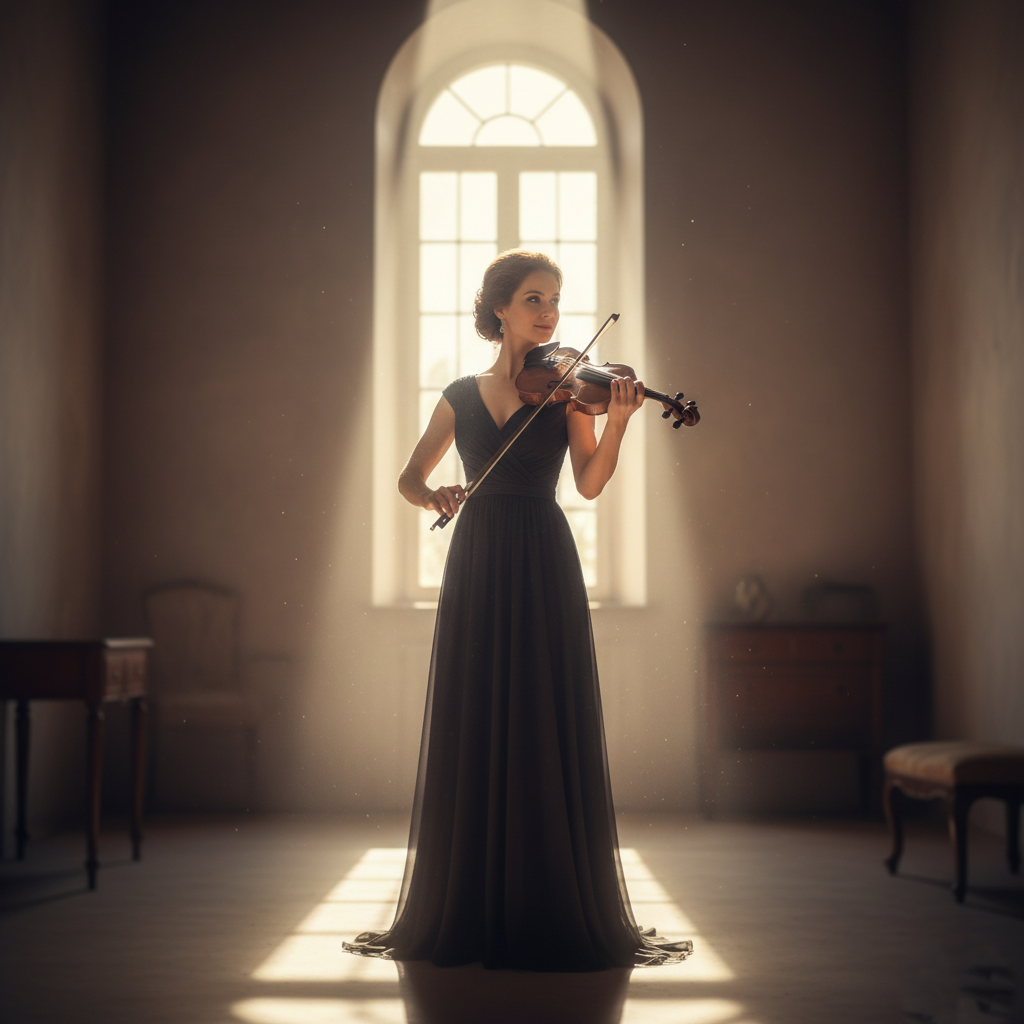
The close-up is one of the most intimate and expressive poses when it comes to photographing a musician with their instrument. In this type of photography, the connection is concentrated in the details: the hands, the face, the textures of the instrument, and the subtle emotions reflected in the gaze. The aim is not to show the entire body or the surroundings, but to capture the essence of the bond between the artist and their creative tool. This approach generates a powerful, almost confessional portrait, where every line and every shadow tells a story.
The musician can hold the instrument close to their face or allow it to occupy a large part of the frame. For example, a violinist might bring the instrument close to their cheek while closing their eyes, or a guitarist might let the strings and their fingers be the true protagonists. The gaze is fundamental: it can be directed toward the instrument, toward the camera, or lost in the distance, suggesting contemplation. In this pose, the silence feels as powerful as the music, and the image seems to capture the instant before or after a melody.
The light should be soft and directed to highlight the textures of the wood, metal, or strings. A dark or neutral background helps the face and instrument stand out without distractions. The composition can play with blur to add a touch of emotional depth, making the details closest to the lens feel almost tangible.
This pose works because it reveals the musician’s sensitivity, showcasing not only the artistry but also the humanity behind the sound.
5. Looking at the horizon with the instrument at rest
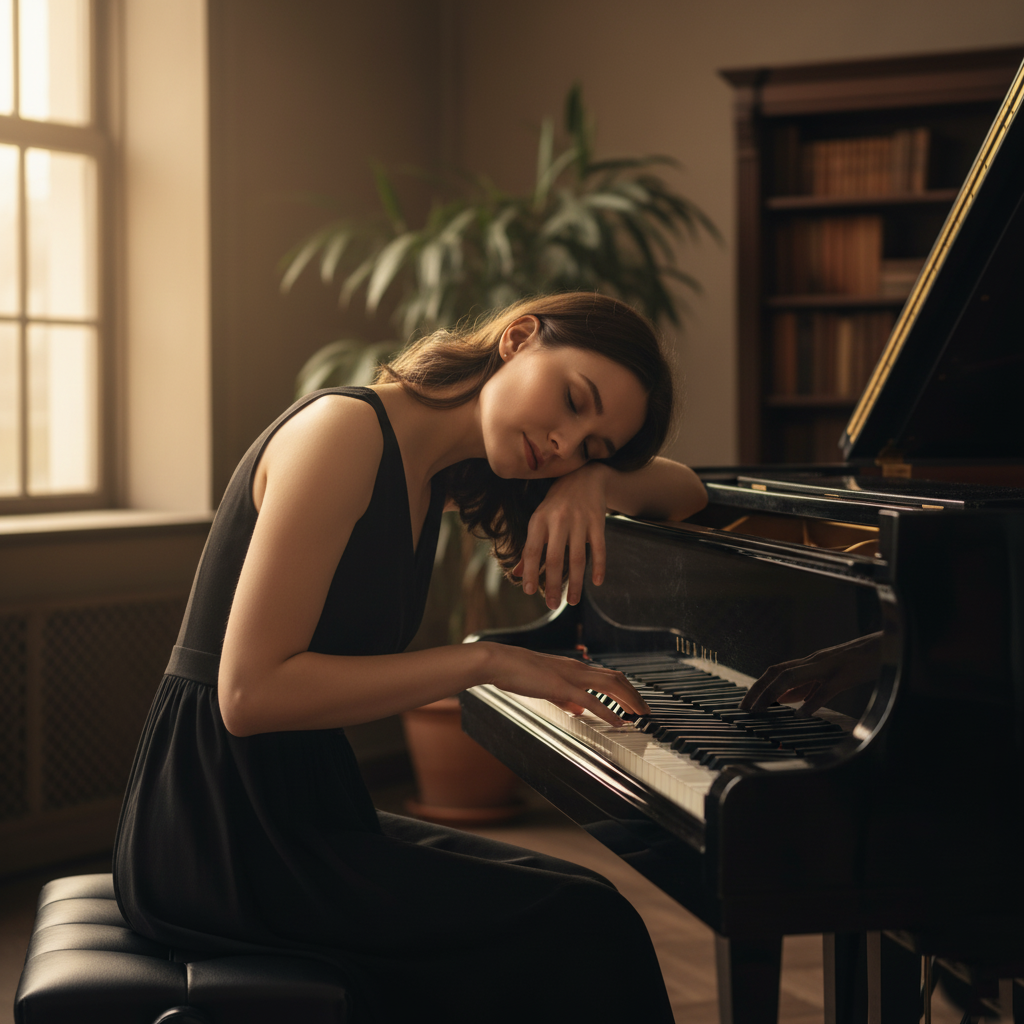
One of the most evocative poses for photographing a musician is one in which the instrument is not being played, but rather held calmly, while the gaze is directed toward the horizon. This pose conveys introspection, peace, and a more spiritual connection with the music. It is no longer about the act of playing, but about the silent bond between the artist and their source of inspiration. It is the moment after the performance, when the melody still resonates in the mind and the body surrenders to tranquility.
The musician should stand or sit, with the instrument resting naturally, without tension or rigidity. The face, slightly turned toward a distant point, suggests reflection or hope. In this pose, the primary emotion is calm: a feeling of fulfillment after having given everything to the art. The body and the instrument seem to rest together, like two old friends who have shared a profound history.
The ideal setting for this photograph is an open space—a terrace, a field, a beach at sunset—where natural light reinforces the feeling of stillness. The soft light of dawn or dusk can bathe the face and instrument in golden or orange tones, adding emotional warmth to the image. The background can remain blurred, allowing the subject and the instrument to be the absolute focal point.
This pose is perfect for concluding a photographic series because it encapsulates the relationship between the musician, their art, and silence. There is no sound, but an emotion that continues to resonate.
Conclusion
Photographing a musician with their instrument goes far beyond a simple portrait session; it’s about capturing the essence of a profoundly human connection. Each pose—whether playing naturally, holding the instrument with pride, in motion, in close-up, or gazing at the horizon—reveals a different dimension of musical art. Each image holds a silent story, a dialogue between the body, emotion, and the sonic material that gives life to music.
Photographs that incorporate musical instruments not only portray people, but also atmospheres, passions, and memories. A violin resting on a shoulder or a guitar held in the hands can speak as much as a melody, because music doesn’t need to be playing to be felt. Posture, gaze, the way fingers rest on the strings, or the way the musician embraces their instrument communicate more than a thousand words. Hence the importance of choosing a pose that reflects authenticity and emotion, without resorting to forced gestures or visual artifice.
Ultimately, the best musical photographs are those that allow the viewer to almost hear the image. Each pose becomes a visual note within a larger composition, where silence is filled with rhythm, and light becomes a melody illuminating the scene. The musician and their instrument become one, and the camera acts as a silent witness to this magical encounter.

